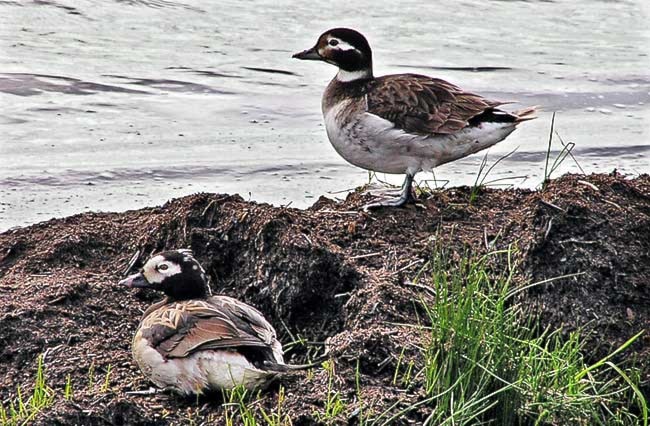North American duck hunters have abandoned use of lead shot for close to a decade, but researchers fear that the poisonous metal continues to kill waterfowl.
Lead is blamed as the culprit responsible for the decline of long-tailed duck populations that straddle the Alaska-Yukon border, in an article published in the June edition of the journal Arctic.
The birds remain among the most populous sea ducks in the world, so there’s currently little fear over the species’ continued survival. They number about 150,000 in Alaska alone, and have a range that almost continuously extends to the Labrador coast.
The long-tailed duck’s population in Alaska is believed to have shrunk by as much as 50 per cent in the last 30 years.
The new study, conducted by Jason Schamber of the US Geological Survey in Anchorage, predicts a more modest decline of 19 per cent.
That lower figure is a result of the high level of uncertainty that comes with studying a duck that spends four-fifths of its life at sea, he said.
Schamber and his team tromped through the wetlands of the Yukon-Kuskokswim Delta between 1991 and 2004 to study the birds’ nesting sites. The delta is believed to be home to one-third of Alaska’s long-tailed duck population.
Schamber didn’t examine the cause of death of ducks, but earlier research suggests that one-fifth of female long-tailed ducks in the delta are exposed to lead, and that lead has reduced the survival odds of breeding spectacled eiders in the delta by almost half.
Birds are known to mistake lead shot for food. Once swallowed, the lead is broken down by stomach acids and enters the bloodstream, from which it damages the vital organs.
The US banned the use of lead shot for hunting waterfowl in 1991. Canada introduced a similar ban in 1999. Non-toxic shot is produced from metals other than lead, such as tungsten.
Contact John Thompson at
johnt@yukon-news.com.
